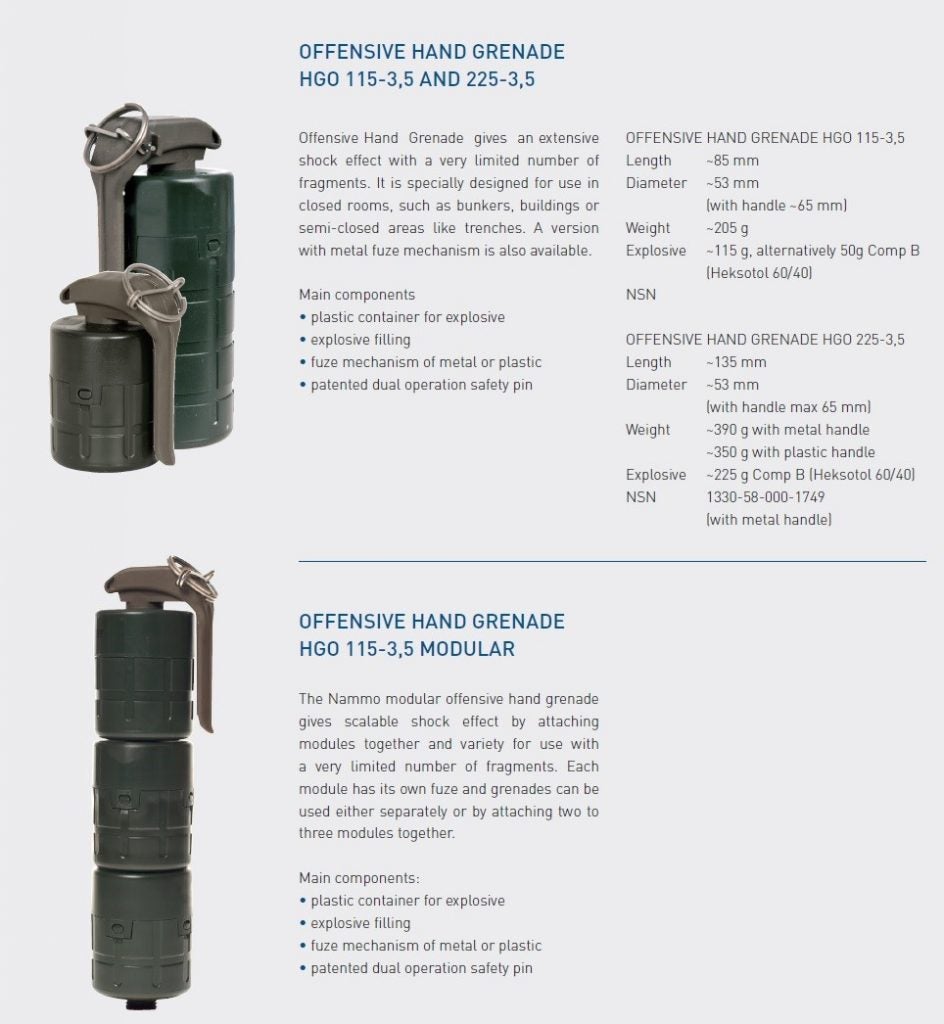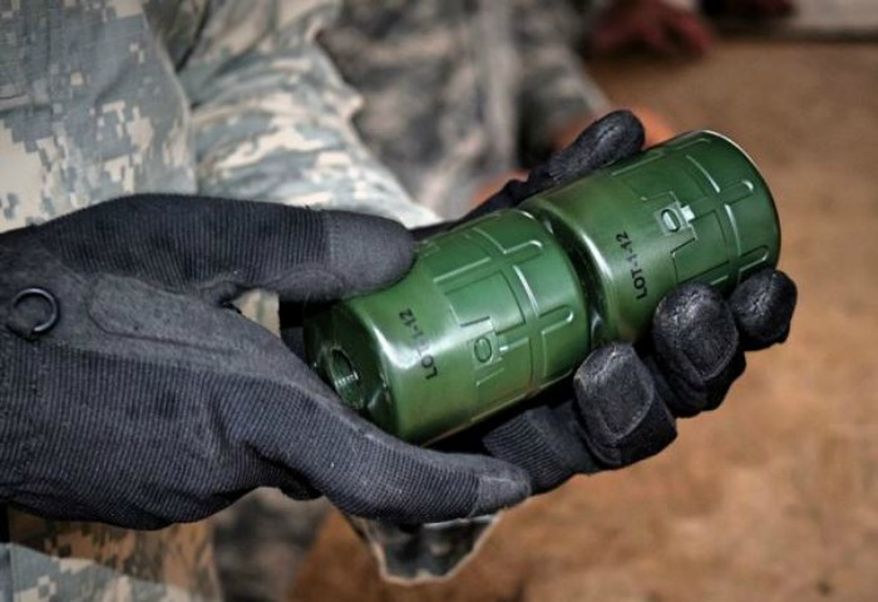The Nammo Scalable Hand Grenade
Norwegian arms manufacturer NAMMO have developed a scalable hand grenade that brings modularity to offensive grenades. The grenade can be ‘expanded’ by attaching up to three plastic bodied segments together. The plastic-cased grenades have a threaded base and neck that allows them to be stacked securely. With each segment the grenade’s yield is increased.
Designated the Offensive Hand Grenade HGO 115-3,5 Modular by NAMMO the grenades have been tested by SOCOM and the regular army since around 2010. Back in 2015, Harry Lubin, then chief of the Experimentation Branch of the Maneuver Center of Excellence’s Maneuver Battle Lab, said that a two module Scalable Offensive Hand Grenade blast “has a devastating effect,” completely collapsed a one-room, adobe-style structure.

During the SOCOM Small Arms Modernization update session held at the recent 2018, NDIA Armament Systems Forum, Lt.Col. Mark Owens, SOCOM’s Project Manager for Ammo, Weapons and Visual Augmentation Systems explained that SOCOM are continuing to field the Scalable Offensive Hand Grenade in mid-2018, through to FY2022. With Small Arms Defense Review reporting that SOCOM have bought over $40 million worth of the offensive hand grenades from NAMMO.
NAMMO describe their offensive modular hand grenade on their site:
“Offensive Hand Grenade gives an extensive shock effect with a very limited number of fragments. These are specifically designed for use in closed rooms, such as bunkers, buildings or semi-closed areas like trenches. Modular offensive hand grenade gives scalable shock effect and variety of use by attaching 1 – 3 body modules together depending on the customer requirements. Each module can have its own fuze, and grenades can be used either separately or by attaching two to three modules together.”
Earlier this month Small Arms Defense Journal suggested that the regular US Army was looking at adopting NAMMO’s offensive hand grenade to replace the MK3, potentially acting on the first live-fire tests completed back in 2015.

